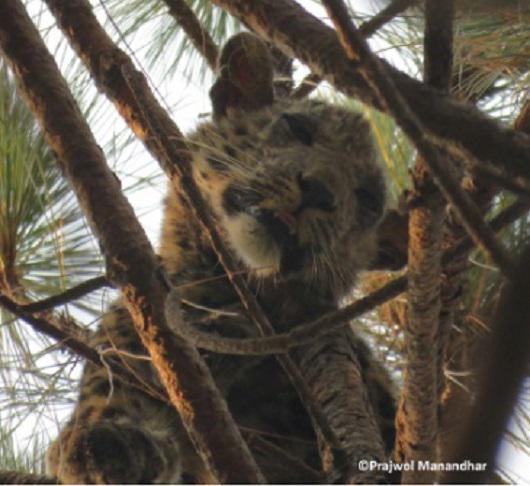Articles featuring the project.
Prajwol Manandhar
The project is aimed at studying Leopards (Panthera pardus) and other wild felids in the mountain forests surrounding Kathmandu valley through non-invasive genetic sampling. There is rapid urbanization happening in the valley as well as paucity of information about apex predators of the forests. By developing molecular tools to identify wild felids through their non-invasive genetic samples (scat), the project aims at gathering important information on apex predators of the mountain forests that play vital role in maintaining health of the forests. By utilizing the genetic information obtained from the samples, the evolutionary history of the wild felids will be assessed, which is underrepresented from the Himalayan foothills of Mahabharata range. The knowledge about their occurrence, distribution and genetic diversity in the Himalayan belt will prove imperative for their conservation in the future.

Kathmandu valley lies in central mid-hills biogeographic region of Nepal, which is an intermountain bowl-shaped basin surrounded by the mountain forests of Mahabharata range. The valley holds almost ten percent of Nepal’s total population making it one of fastest urbanizing cities in Asia (Muzzini, 2013). The haphazard expansion and urbanization has been causing notable impacts on wildlife especially involving leopard (Panthera pardus) encounters around the valley outskirts as well as city areas. Although, there has been efforts in tiger (Panthera tigris) and snow leopard (Panthera uncia) conservation in Terai and Himalayan regions of Nepal respectively, very less focus have been given towards leopards which is the apex predator in the mid-hills region. By utilizing molecular tools and non-invasive genetic sampling, we plan to study leopards and other wild felids in mountain forests of Kathmandu valley. The presence/absence information of carnivores especially targeting four species of wild felids: leopard, clouded leopard (Neofelis nebulosa), jungle cat (Felis chaus) and leopard cat (Prionailurus bengalensis) will be assessed through molecular tools.

Correct species identification of carnivore scats is very important when multiple carnivores are sympatric in an area. We will develop PCR based molecular tools that can effectively identify and differentiate among the four target wild felid species along with domestic cat from the scat samples. We will utilize DNA sequence information to study evolutionary history of the felids from this geographic region. The genetic data of wild felids from this region is currently underrepresented and thus will be contributed as public resource in NCBI GenBank database following publications. Our tools will have the potential to provide future assistance to authorities in accurate identification of confiscated contrabands such as skin, bone etc from these felids species.
This study will also help generate ecological insights of leopards from the mid-hills region of Nepal which is largely lacking. This important information will play crucial role in their conservation, mainly highlighting leopards as a keystone species of mid-hill biodiversity areas of Nepal. The genetic information will potentially help to narrow our knowledge gap in the evolutionary history of these charismatic yet neglected species from the Himalayan belt. By utilizing the genetic technology, we will also identify other sympatric species from scats that do not get identified as any of the wild felids. This will provide additional information about the overall carnivore community of the mountain forests of Kathmandu valley in general.